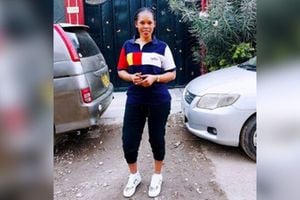Maseno is cradle of Abanyole, but it is in KisumuMaseno is cradle of Abanyole, but it is in Kisumu
What you need to know:
- So, there has always been a dispute between Abanyole and the Luo over Maseno, a fast growing town that is the home of famous Maseno School, Maseno Hospital and now Maseno University.
- Records show that it was the rapid growth of the Anglican Church that led to the creation of its Maseno North and Maseno South dioceses; the former for the Luhya and the latter to serve the Luo. Olang’ only became Anglican Archbishop and Bishop of Nairobi in 1970 when the border dispute was an old issue.
For us Abanyole, the issue of where Maseno lies is as black and white as a panda: Emuseno, as we call it, is our cradle.
Abanyole hold that Emuseno (named from the omuseno tree) was usurped by the Luo whose political leadership somehow hoodwinked and or outwitted their Abanyole counterparts in the lead up to Independence.
Similarly, for our Luo neighbours, there need not be any dispute about Maseno; it was in Kisumu District, is in Kisumu County and will remain there. For them, Maseno, rightly and legally, is in Kisumu and, therefore, is Luo territory. For Abanyole, their cradle should not be in Luoland, but, unfortunately and, tragically, that is where it is.
Therefore its growth, in every material particular, is the pride of the Luo and not Abanyole. Of course, for the Luo, they are rightly benefitting from what is legally theirs. So, there has always been a dispute between Abanyole and the Luo over Maseno, a fast growing town that is the home of famous Maseno School, Maseno Hospital and now Maseno University.
Fuelling this dispute are resources, which is why Vihiga Governor Moses Akaranga, a Maragoli sticking up for Abanyole, re-ignited the feud two weeks ago. Mr Akaranga loudly coveted the revenue Kisumu County gets from Maseno. When he was Emuhaya MP, Mr Kenneth Marende sought to address the issue diplomatically and through official avenues.
His concern was stirred by claims by Abanyole that, one, Maseno University was encroaching on their lands and, two, it was impossible for Abanyole to be hired at the institution. Campaigning in the 1960s and 1970s, the late Wilson Esinapwaka Mukuna always excited Abanyole by accusing his adversary Eric Khasakhala of selling Emuseno to the Luo.
And he would gripe that even the water used in Maseno came from Abanyole’s own River Jordan. Though Mukuna, an aggressive politician, excited Abanyole over Emuseno, he never incited them. Mr Marende, a calculating attorney, worked through official machinery, but it was not because his constituents had been incited or taken the law into their own hands.
But this never changes: Abanyole hold that their forbears welcomed the Luo and later white missionaries into omuseno (cradle), but the two later turned against them and took over Emuseno. Does Mr Akaranga want war with the Luo? The governor is no warmonger; his Vihiga County is part and parcel of the proposed greater Western Kenya economic block.
INTERMARRY
Abanyole will tell you they have “their people” (close and distant relatives) throughout Luoland and especially in Kisumu and Siaya counties. Indeed, families of Abanyole and the Luo straddle Maseno town. Needless to say, Abanyole and the Luo of Maseno intermarry. Did the late Archbishop Festus Olang’ create the dispute over Maseno’s border?
No. One, the schism between the Church Missionary Society (the Anglicans) and Church of God, for example, which split not only the Luo and Abanyole faithful, but also divided Abanyole, existed long before Olang’ became Archbishop. Two, Olang’ was made Bishop of Maseno Diocese, which comprised Western and Nyanza provinces, in 1960.
Records show that it was the rapid growth of the Anglican Church that led to the creation of its Maseno North and Maseno South dioceses; the former for the Luhya and the latter to serve the Luo. Olang’ only became Anglican Archbishop and Bishop of Nairobi in 1970 when the border dispute was an old issue.
It is important to note that although Olang’ was born and buried next door to Maseno, he grew up in Kisumu County. His family settled in Kano because there was plenty of pasture for its vast herd. The parents never returned to Ebunyole. It is why Olang’ was fluent in both Olunyole and Dholuo and why he would not have antagonised Abanyole and the Luo.
Would Abanyole want Emuseno for themselves? Of course, yes! Can we grab it? Of course we cannot, even if we wanted to. Disputes are resolved in accordance with the law and not in harmony with the emotions of disputants. Second, Maseno is peopled by both Abanyole and Luo. Last, it is not only at Maseno that the two communities share a border.
What is the way forward? Abanyole’s age-old sense of dispossession is acutely felt when they are excluded from opportunities available in public institutions in Maseno.
It is this issue that needs to be addressed and redressed with a view to fostering sustainable amity between Abanyole and the Luo who both lay claim to and live and work in Maseno.
Opanga is a media consultant; [email protected]





